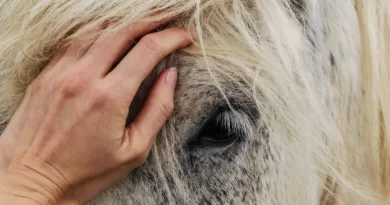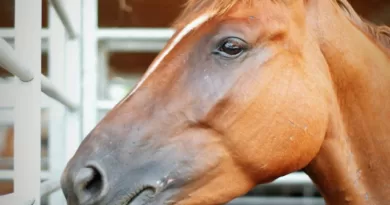How Do Horses Pee
Anatomy of a Horse’s Urinary System
The urinary system of a horse consists of various interconnected organs that play a vital role in eliminating waste from the body. One of the key components of this system is the kidneys, which are responsible for urine formation. Situated within the abdominal cavity, the kidneys extract waste products, excess water, and other substances from the bloodstream, ultimately producing urine.
Connected to the kidneys is the bladder, another essential organ of the urinary system. The bladder acts as a reservoir for urine, storing it until the horse is ready to urinate. Located in the pelvic region, this muscular organ can expand and contract to accommodate varying amounts of urine. When the bladder is full, signals are sent to the brain, triggering the urge to urinate and prompting the bladder to contract, expelling the urine through the urethra. Understanding the anatomy of a horse’s urinary system is crucial for recognizing and addressing potential issues that may arise in this vital system.
The Role of the Kidneys in Urine Formation
The kidneys play a crucial role in the formation of urine within a horse’s body. These bean-shaped organs are located on either side of the spine, just below the rib cage. Their main function is to filter waste products and excess fluids from the blood, producing urine as a result.
Inside the kidneys, millions of tiny filtering units called nephrons are responsible for this vital process. Each nephron consists of a glomerulus, which acts as a sieve, and a tubule. As blood passes through the glomerulus, waste products such as urea, creatinine, and excess minerals are filtered out, while essential substances like water, glucose, and electrolytes are retained. The filtered waste products, along with the excess fluids, travel through the tubules, where further reabsorption takes place. Ultimately, the remaining waste and excess fluid are collected and transported as urine to the bladder for disposal.
Understanding the Bladder and Its Function
The bladder is an essential component of a horse’s urinary system. It serves as a storage organ for urine before it is expelled from the body. The bladder is a hollow, muscular organ that can expand and contract to accommodate varying amounts of urine. Located in the pelvic cavity, it is surrounded by supportive tissues and neighboring structures such as the reproductive organs and the rectum. The bladder receives urine from the kidneys through the ureters, and it is responsible for holding and releasing urine in a controlled manner.
The main function of the bladder is to hold urine until it reaches a certain volume, triggering the urge to urinate. When the bladder is empty, it appears small and flat. However, as urine accumulates, it expands and takes on a rounder shape. The bladder also contains receptors that signal to the brain when it is time to empty. This coordination between the bladder and the central nervous system allows for the conscious control of urination in horses. Understanding the bladder’s function is crucial in maintaining a horse’s overall urinary health.
The Urethra: Passage of Urine from the Bladder
The urethra is a vital component of a horse’s urinary system, responsible for the passage of urine from the bladder to the outside environment. It serves as a conduit through which urine travels, allowing for the expulsion of waste from the body.
In horses, the urethra is located in the pelvic region and runs from the base of the bladder towards the external genitalia. Its structure is designed to ensure a one-way flow of urine, preventing any backflow or leakage. The diameter of the urethra varies along its length, with narrower segments in certain areas to facilitate the propulsion of urine. As urine passes through the urethra, it is aided by muscular contractions that help propel the waste out of the body. This process allows for effective elimination of toxins and byproducts, ensuring the horse’s overall health and well-being.
Factors Affecting a Horse’s Urination Frequency
Factors affecting a horse’s urination frequency can vary depending on several factors. One of the primary factors is the horse’s hydration level. A well-hydrated horse is likely to urinate more frequently than a dehydrated one. This is because water intake directly affects urine production in horses.
Another factor that can influence a horse’s urination frequency is its diet. Horses that consume a diet high in fiber, such as hay or grass, tend to have more frequent urination. This is because fiber-rich diets create a higher volume of waste in the digestive system, leading to increased water absorption and subsequently more urine production. Conversely, horses on a low-fiber diet, such as a concentrate or grain-based diet, may have less frequent urination due to lower fiber content in their meals.
Common Urinary Issues in Horses
Urinary issues can arise in horses, just like in any other living creature. These issues may vary in severity and can affect different parts of the horse’s urinary system. One common problem is the development of bladder stones. These are solid accumulations of minerals that form within the horse’s bladder. If left untreated, bladder stones can cause discomfort and pain, potentially leading to more serious complications. Another common urinary issue in horses is urinary tract infections (UTIs). Just like in humans, bacteria can invade the urinary tract, causing inflammation and discomfort. UTIs can be quite uncomfortable for horses and may require veterinary treatment to resolve.
Recognizing Signs of Urinary Tract Infections
Urinary tract infections (UTIs) can occur in horses, just like in humans and other animals. However, recognizing the signs of UTIs in horses can be challenging as they are not able to communicate their discomfort directly. One common symptom to watch out for is frequent urination. If you notice that your horse is urinating more often than usual, it could be a sign of a UTI. Additionally, horses with UTIs may also display signs of pain or discomfort while urinating. They may appear restless, exhibit excessive tail swishing, or even kick or bite at their abdomen.
Another possible indicator of a UTI in horses is the presence of blood in their urine. If you notice a pink or reddish color in your horse’s urine, it is important to investigate further as it may indicate an infection in the urinary tract. It is worth noting that blood in the urine can also be a sign of other conditions, so it is important to consult with a veterinarian to determine the underlying cause. Other less common signs of a UTI in horses can include dribbling of urine, cloudy or foul-smelling urine, and general signs of discomfort or lethargy. Being aware of these potential signs can help you promptly detect and address any urinary tract infections that your horse may develop.
Maintaining Proper Hydration for Healthy Urination
Proper hydration is crucial for maintaining a healthy urinary system in horses. Adequate water intake helps to ensure a sufficient volume of urine production, which is necessary for flushing out toxins and waste products from the body. Horses should have access to fresh, clean water at all times, especially during hot weather or periods of intense exercise when they may be more prone to dehydration.
To encourage your horse to drink, consider adding some flavor to the water. Some horses may be more inclined to drink if their water is flavored with a splash of apple juice or a handful of chopped carrots. Additionally, it is important to regularly clean and refill water buckets or troughs to prevent the buildup of dirt or algae, which could deter horses from drinking.
In addition to ensuring access to clean water, it is essential to monitor your horse’s hydration status. One way to do this is by checking their hydration level through a skin pinch test. Gently pinch the skin on your horse’s neck or shoulder and observe how quickly it springs back into place. If it takes longer than a second or if the skin remains tented, it may indicate dehydration. In such cases, consult your veterinarian for further guidance on rehydration techniques, which may include intravenous fluids.
• Proper hydration is crucial for maintaining a healthy urinary system in horses.
• Adequate water intake helps flush out toxins and waste products from the body through urine production.
• Horses should have access to fresh, clean water at all times, especially during hot weather or intense exercise.
• Adding flavor to the water can encourage horses to drink more, such as apple juice or chopped carrots.
• Regularly cleaning and refilling water buckets or troughs prevents dirt or algae buildup that could deter horses from drinking.
• Monitoring your horse’s hydration status is important.
– Use a skin pinch test by gently pinching their neck or shoulder and observing how quickly the skin springs back into place.
– If it takes longer than a second or remains tented, it may indicate dehydration.
– Consult your veterinarian for further guidance on rehydration techniques if necessary, which may include intravenous fluids.
The Influence of Diet on Urine Production
The diet of a horse plays a significant role in determining the production of urine. A horse’s diet consists primarily of forage, such as hay and grass, which contain high amounts of fiber. Fiber is important for maintaining proper digestive health in horses. When a horse consumes fiber-rich forage, it promotes the production of more saliva, which in turn increases the volume of urine. This increased urine production helps to flush out toxins from the horse’s system and maintain a healthy urinary tract.
Additionally, the type and amount of protein in a horse’s diet can also influence urine production. Protein is an essential nutrient for horses, as it provides the building blocks for muscle growth and repair. However, excessive protein intake can lead to an increased workload on the kidneys and result in higher urine production. The kidneys play a crucial role in filtering waste products from the bloodstream, including excess protein. Therefore, a balanced diet that provides adequate protein without overloading the kidneys is crucial for maintaining healthy urine production in horses.
Tips for Monitoring and Promoting Urinary Health in Horses
Proper monitoring and care are essential for maintaining a horse’s urinary health. Regular observation of the horse’s urination frequency, volume, and color can provide valuable insights into its overall well-being. A healthy horse should urinate regularly, with urine being pale yellow or straw-colored. Any significant changes in urination patterns, such as increased frequency, decreased volume, or unusual color, may indicate an underlying issue and should be promptly addressed by a veterinarian.
In addition to monitoring, promoting urinary health in horses involves several key practices. Ensuring a consistent and adequate water supply is crucial, as dehydration can lead to urinary complications. Horses should be provided with clean, fresh water at all times, especially during hot weather or strenuous activities. Implementing regular exercise routines can also contribute to urinary health by stimulating blood flow and overall body function. It is important to strike a balance between exercise and rest, as excessive strenuous activities can lead to dehydration and urinary problems.
What is the anatomical structure of a horse’s urinary system?
The urinary system in horses consists of the kidneys, bladder, and urethra.
What is the role of the kidneys in urine formation?
The kidneys filter waste products and excess fluids from the horse’s bloodstream, producing urine.
What is the function of the bladder in a horse’s urinary system?
The bladder stores urine until it is expelled from the body during urination.
How does urine pass from the bladder in a horse’s urinary system?
Urine passes from the bladder through the urethra, which is the passage leading out of the body.
What factors can affect a horse’s frequency of urination?
Factors such as water intake, exercise level, temperature, and certain health conditions can influence a horse’s urination frequency.
What are some common urinary issues that horses may experience?
Horses can experience urinary tract infections, bladder stones, kidney disease, and urinary incontinence.
How can I recognize signs of a urinary tract infection in my horse?
Signs of a urinary tract infection in horses may include frequent urination, blood in the urine, discomfort during urination, and changes in urine color or odor.
How important is proper hydration for maintaining healthy urination in horses?
Proper hydration is crucial for maintaining healthy urination in horses as it helps flush out toxins and prevents urinary tract infections.
Can a horse’s diet affect urine production?
Yes, a horse’s diet can influence urine production. Certain ingredients in the diet can affect the pH level of urine, which may increase the risk of developing urinary issues.
What are some tips for monitoring and promoting urinary health in horses?
Some tips for monitoring and promoting urinary health in horses include ensuring clean and fresh water availability, providing a balanced diet, regular exercise, and promptly addressing any signs of urinary issues.




